The entrance to the atelier… charming!
Images courtesy of: Suzanne Lovell, Inc.
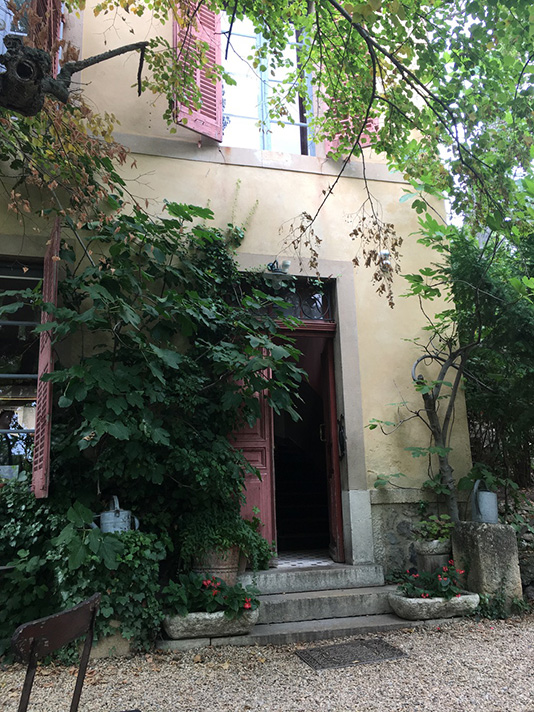
The entrance to the atelier… charming!
Images courtesy of: Suzanne Lovell, Inc.
The beauty of the French countryside is unique and serene. There’s little doubt as to why Paul Cézanne decided to settle in Aix-en-Provence, the former capital of Provence. The city’s art center pays homage to the artist who, towards the end of his life, painted out of a local studio. Within this beautiful historical mansion, there is a film about the life of Paul Cézanne playing on repeat. The film brilliantly portrays how even though today, Cézanne is considered one of the foremost Impressionist painters, he didn’t live long enough to see any success. How sad this must have been.
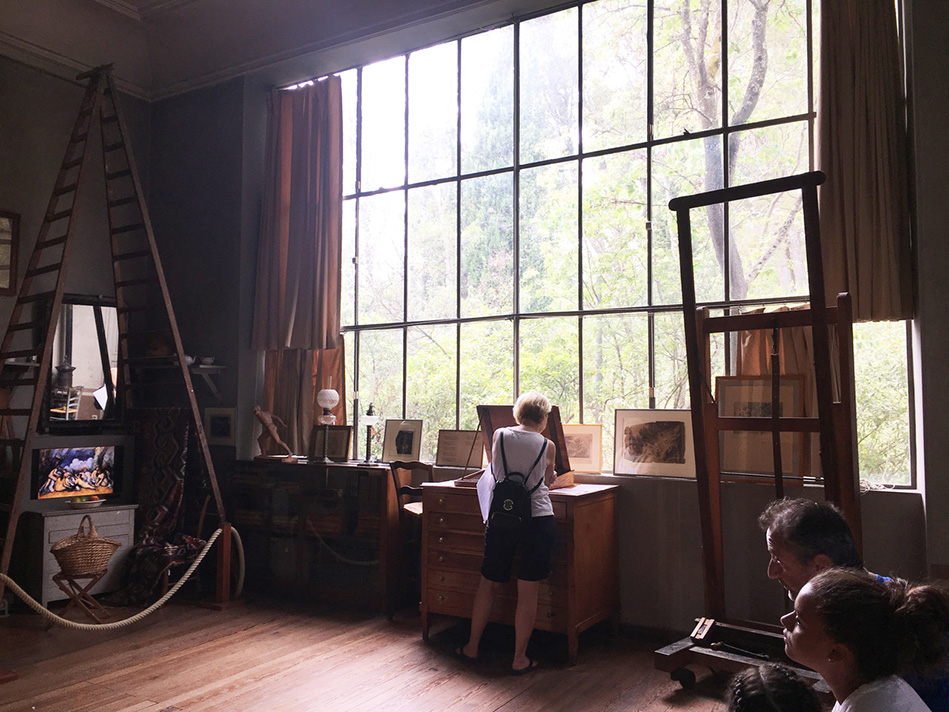
Only once you’re inside the studio can you fully appreciate the magnitude of the windows and the special light that comes through.
Image courtesy of: Suzanne Lovell, Inc.
Walking to the studio though the charming winding roads, it is hard not to fall in love with Aix-en-Provence. The studio is set in front of a gorgeous panorama that includes the Sainte Victoire-Mountain, a subject which captivated Cézanne and was a frequent theme of his paintings.
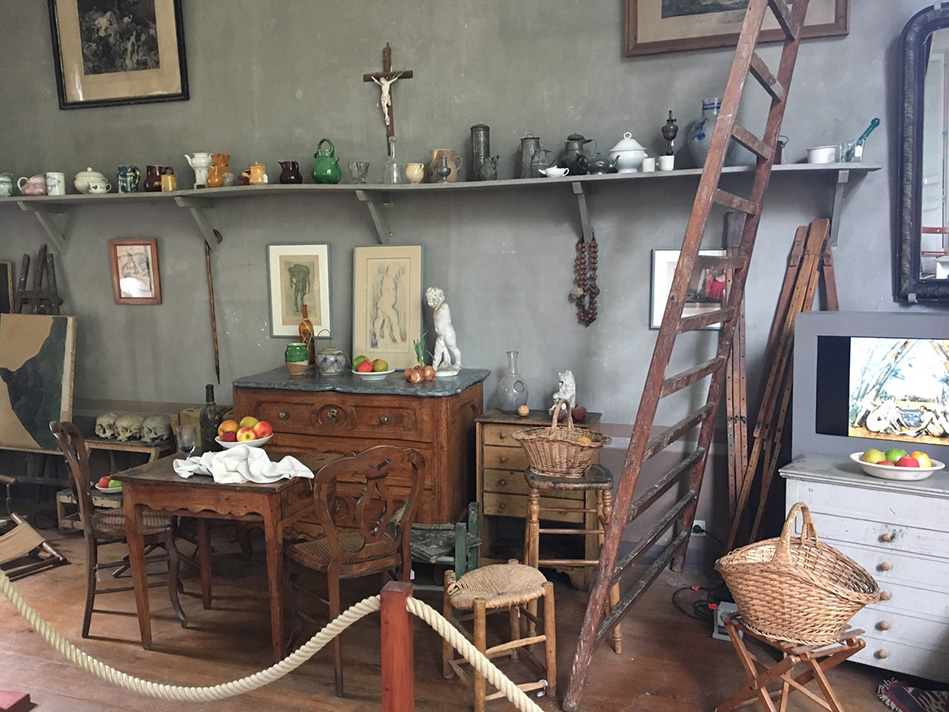
The ladder, the fruit, the jars… your imagination goes wild when you see these objects in real life!
Image courtesy of: Suzanne Lovell, Inc.
Atelier de Cézanne was the artist’s private studio from 1902-1906. The entrance is through a tall salmon-colored wooden gate, and there is a wonderful small gravel courtyard in the front which is shaded and covered by mature trees, vines, and bushes. The surrounding greenery is almost humanlike… appearing to hold this dear building close and safe.
For many, many years, the studio sat identical to how Cézanne left it, totally preserved and unchanged. It’s full of his cherished possessions, objects and letters; and once inside, you feel as though you have entered a time-warp. The light inside is incredible and it is the first thing you notice. Both the north and south “walls” are basically metal-framed windows which start waist-height and advance all the way to the very high ceilings.
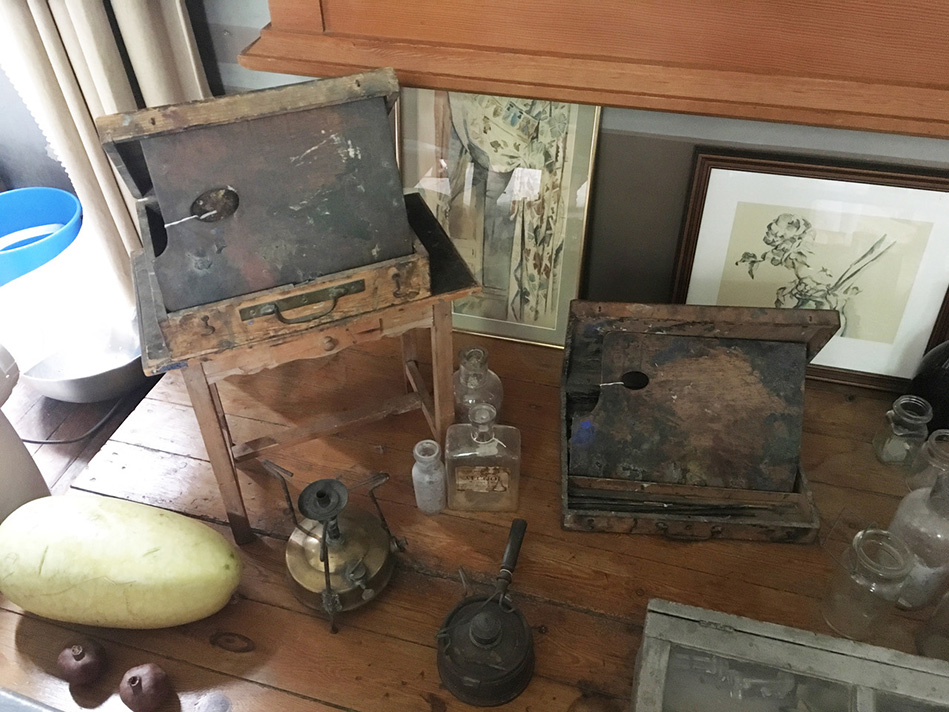
Image courtesy of: Suzanne Lovell, Inc.
Cézanne clearly put a lot of thought into choosing this specific building for his studio. The artist designed this space with exact architectural specifications that he believed would provide him with the best possible environment for painting. Perhaps nothing showcases this more clearly than the eight-inch-wide floor-to-ceiling skinny hatch door in the corner of the north wall. This amendment was designed to be able to slide out the larger works which were too tall for the standard door. This is an amazing display of architecture, interior design, and art coming together.
Cézanne was notorious for requiring his models to sit still for hours on end. Many models chose not to return; however, the jars, porcelain vases, and bottles that he mimicked in his still-life paintings retuned again and again. Those familiar objects are still in Cézanne’s studio, just as he left them. Unlike landscapes which change over time, the objects are simply ordinary things… unaware of their own fame throughout the world.
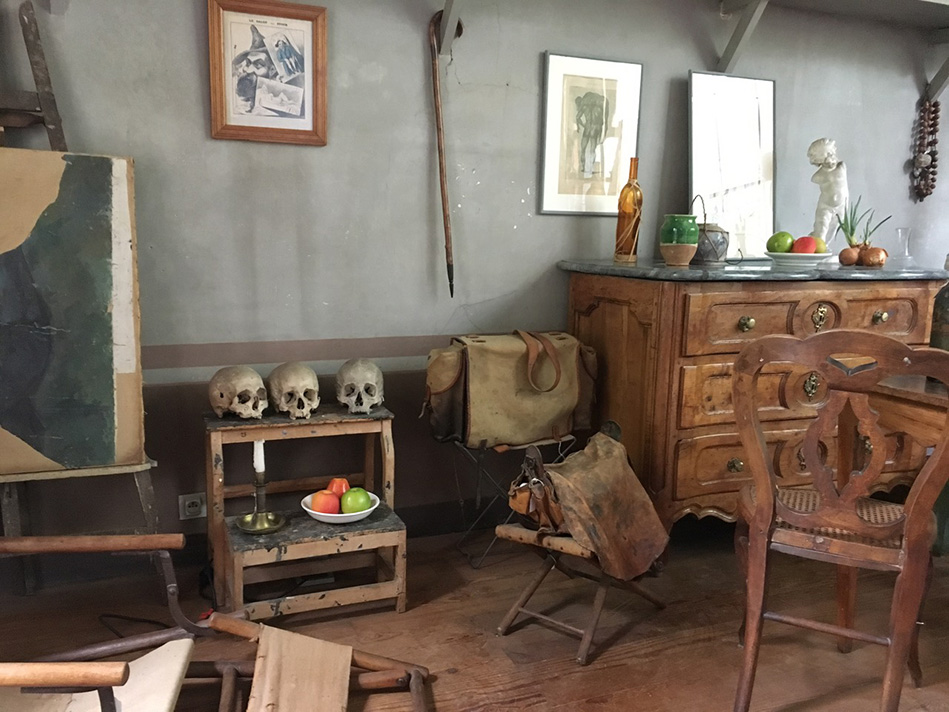
The infamous skulls in a set of three. We love how they are placed among all the “ordinary” items in the studio.
Image courtesy of: Suzanne Lovell, Inc.
One of the most touching elements is a letter from Cézanne to Monet. Written in 1895, Cézanne speaks of his work and of returning to Aix-en-Provence from Paris to pursue his craft. He expressed that he was discouraged by his results, and in the letter, Cézanne thanked Monet for his moral support which served as a “stimulus for his painting”.
Atelier de Cézanne is one of the most brilliant examples of “real” art history still intact today!